1950s Men’s Fashion: 16 Classic Looks That Still Define Masculine Style
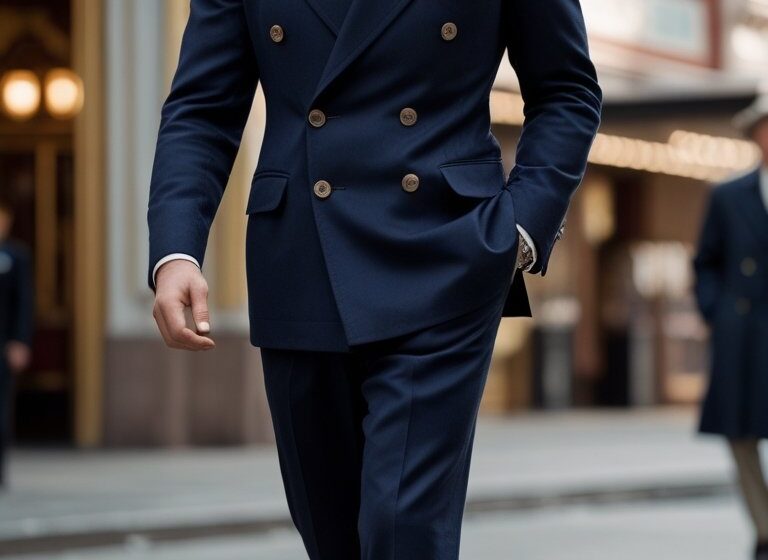
The 1950s marked a pivotal era in men’s fashion, combining traditional tailoring with new cultural influences. From greaser aesthetics to clean-cut formality, the decade offered a range of looks that reflected both rebellion and respectability. These outfits remain timeless because of their sharp structure, easy layering, and strong personality.
1. Crisp White T-Shirt with Blue Jeans and Cuffed Sleeves
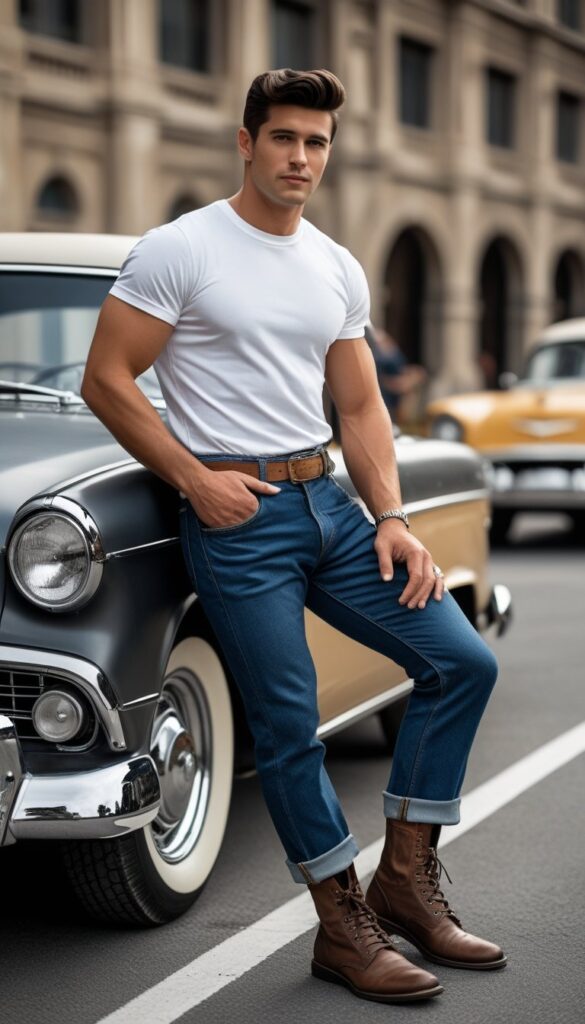
This casual yet iconic combo became synonymous with youth culture, thanks to figures like James Dean and Marlon Brando. The fitted white tee tucked into high-waisted denim created a clean silhouette, while rolled sleeves added a touch of rebellion. Leather boots or Converse finished off the look with authenticity.
Why it works: It’s simple, masculine, and effortlessly stylish. The strong fit and minimalism make it easy to replicate across generations.
2. Leather Jacket with White Tee and Slim Trousers
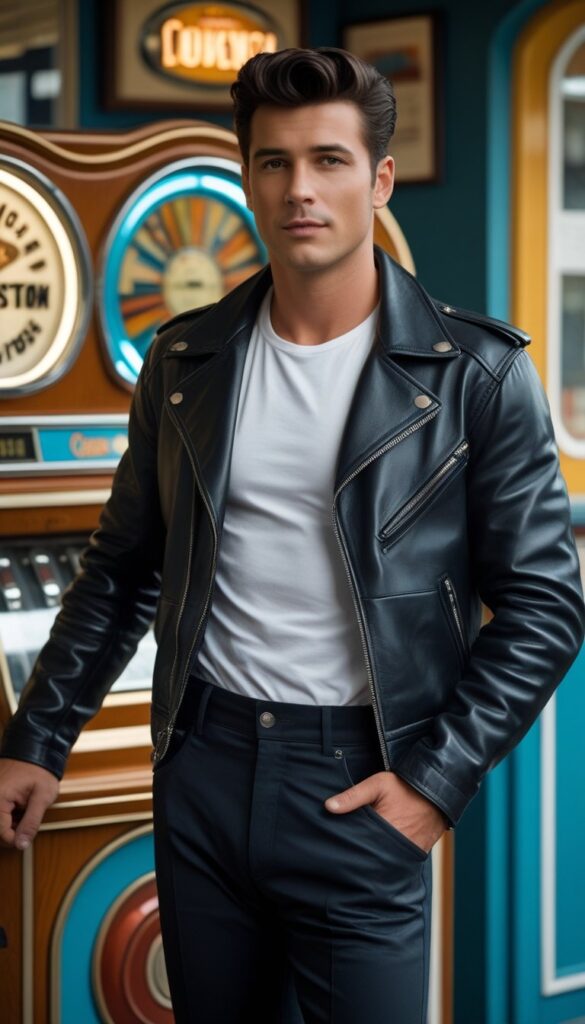
Popular among greasers and rock ’n’ roll fans, the leather jacket added instant edge. Worn over a clean tee with dark trousers or denim, this outfit played on contrast and attitude. A slicked-back hairstyle and sunglasses completed the tough-guy image.
Why it works: The leather jacket commands attention while the rest of the outfit stays grounded. It’s bold without trying too hard, and forever cool.
3. Cuban Collar Shirt with Tapered Slacks and Loafers
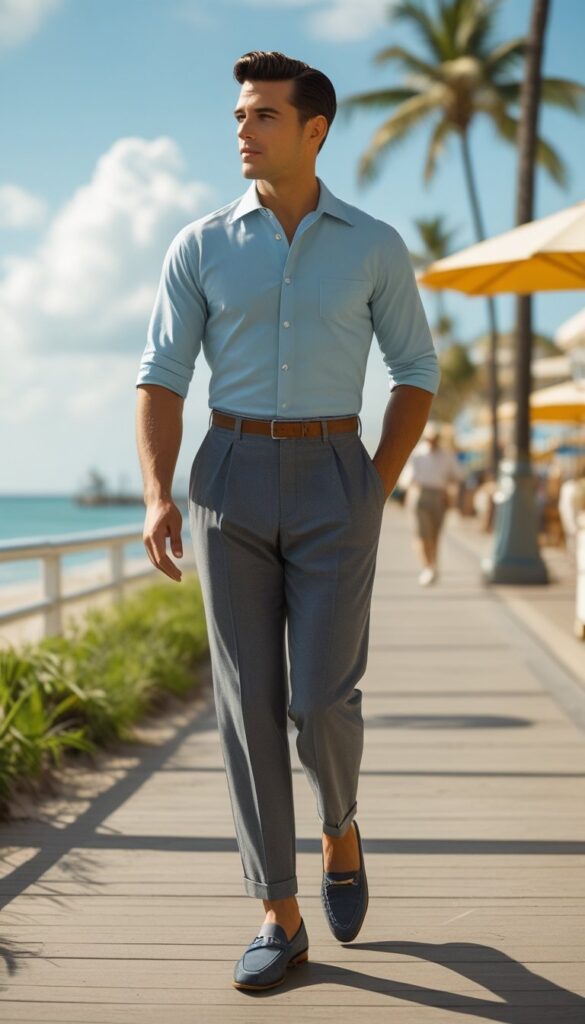
This lightweight, relaxed shirt featured bold colors or subtle patterns and was often paired with tapered trousers. It allowed airflow and movement, making it ideal for summer or travel. Worn with loafers and sunglasses, it projected leisure and class.
Why it works: It’s breezy and comfortable yet refined. The open collar and tucked shirt add polish without formal stiffness.
4. Varsity Jacket with Chinos and Crewneck Sweater
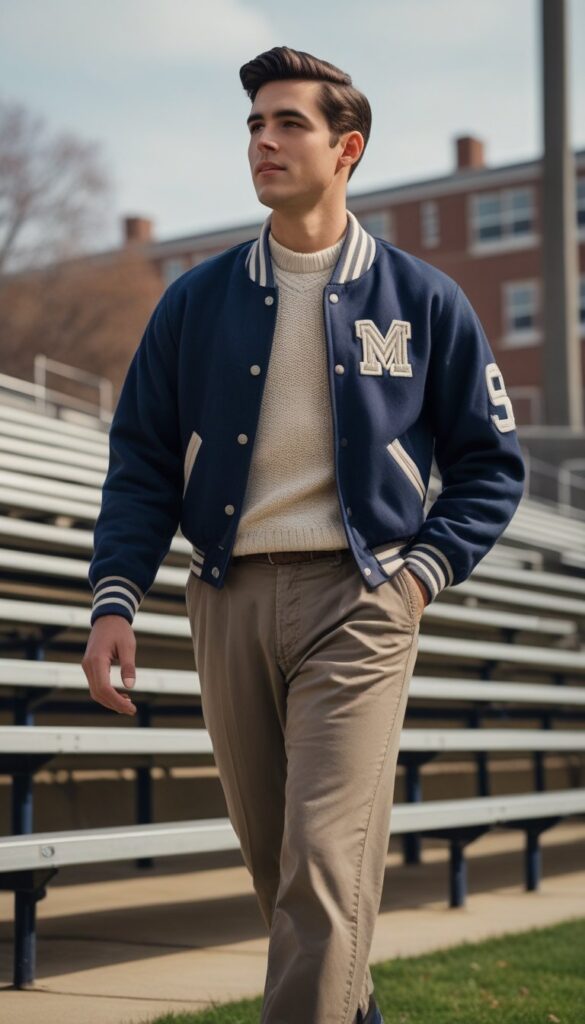
A staple for students and young men, the varsity jacket brought color and school spirit into everyday wear. Layered over a crewneck sweater and matched with clean chinos, it struck a balance between sporty and put-together. White socks and saddle shoes tied it together.
Why it works: It channels youth and energy while keeping the silhouette structured. The layers make it both practical and visually engaging.
5. Double-Breasted Navy Suit with Pocket Square and Polished Shoes
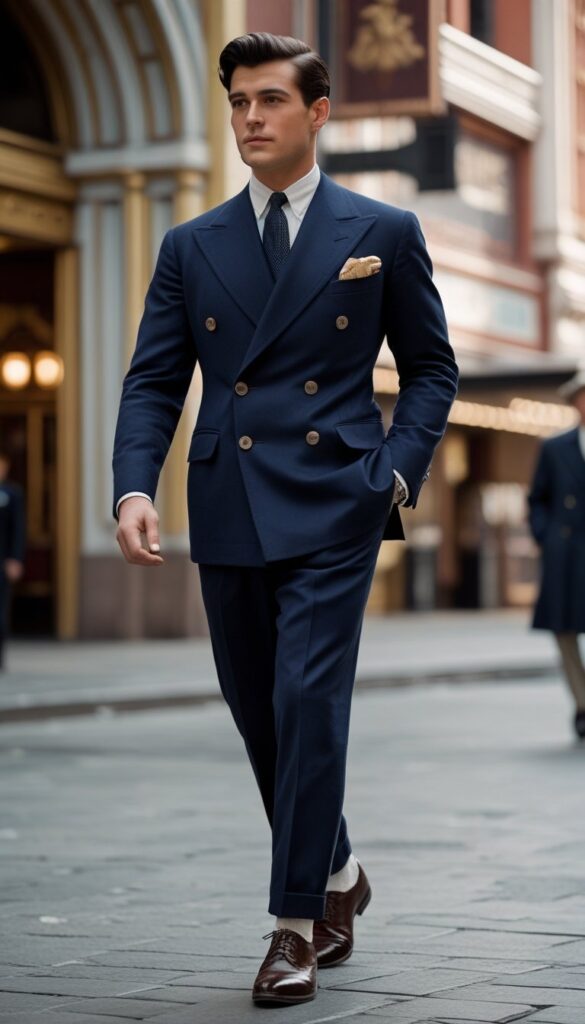
For formal settings, a navy double-breasted suit was a power piece. Accented with a white shirt, subtle tie, and a carefully folded pocket square, the look spoke of success and taste. Oxfords or wingtips grounded the ensemble in timeless style.
Why it works: The structure of a double-breasted suit enhances the upper body while keeping proportions balanced. It’s a confident look built on precision.
6. Wool Cardigan with Button-Down Shirt and Pleated Trousers
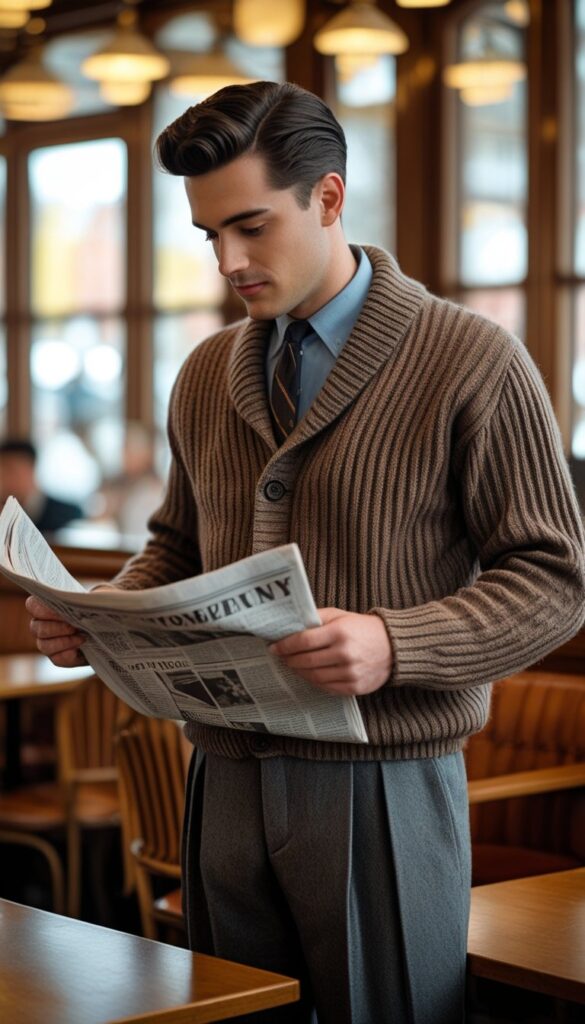
Men wore fitted wool cardigans over tucked-in button-downs for a smart yet relaxed everyday outfit. Paired with pleated trousers and leather shoes, the look offered maturity and warmth without feeling stuffy. Patterns like argyle or muted stripes added a personal touch.
Why it works: This outfit is both cozy and polished, offering layers that work well across seasons and settings.
Also Read:1950s Fashion: 17 Iconic Outfit Ideas That Capture the Era
7. Grey Flannel Suit with Tie and Fedora Hat
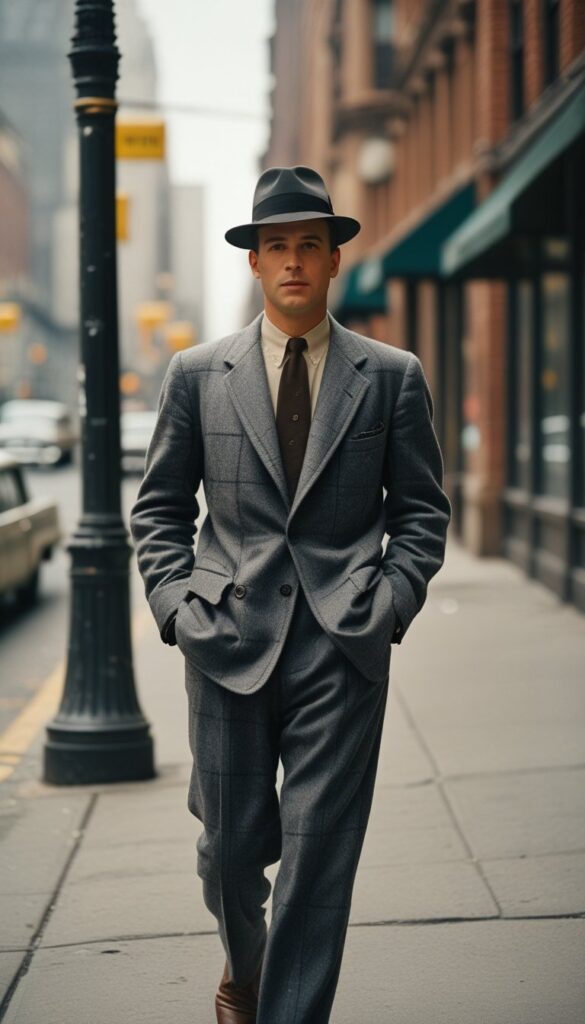
The grey flannel suit was a post-war staple that balanced professionalism and style. Worn with a conservative tie and finished with a felt fedora, it was standard business attire for office workers and executives alike. Tailored lines made it flattering and formal.
Why it works: It’s the definition of “dressed for success”—clean, professional, and time-tested.
8. Short-Sleeve Knit Polo with High-Waisted Slacks
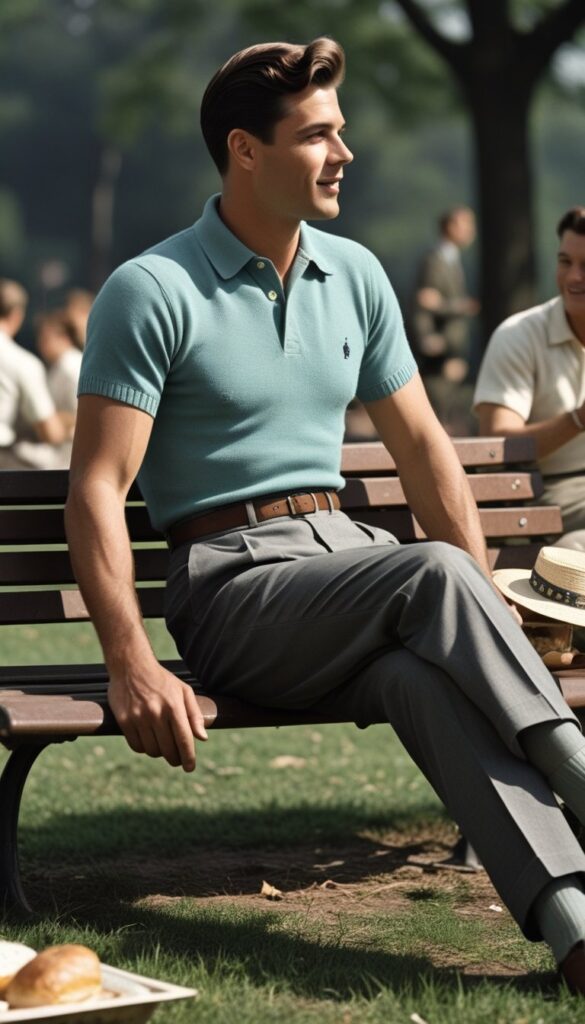
This everyday casual look kept things breathable and refined. A fine-knit polo, sometimes with contrasting cuffs or collar, tucked into high-waisted trousers was ideal for summer activities or leisure outings. Leather sandals or lace-up shoes added comfort.
Why it works: It’s effortless style with smart tailoring. The knit adds texture while the tucked polo defines the shape.
9. Denim Jacket with White Tee and Work Pants
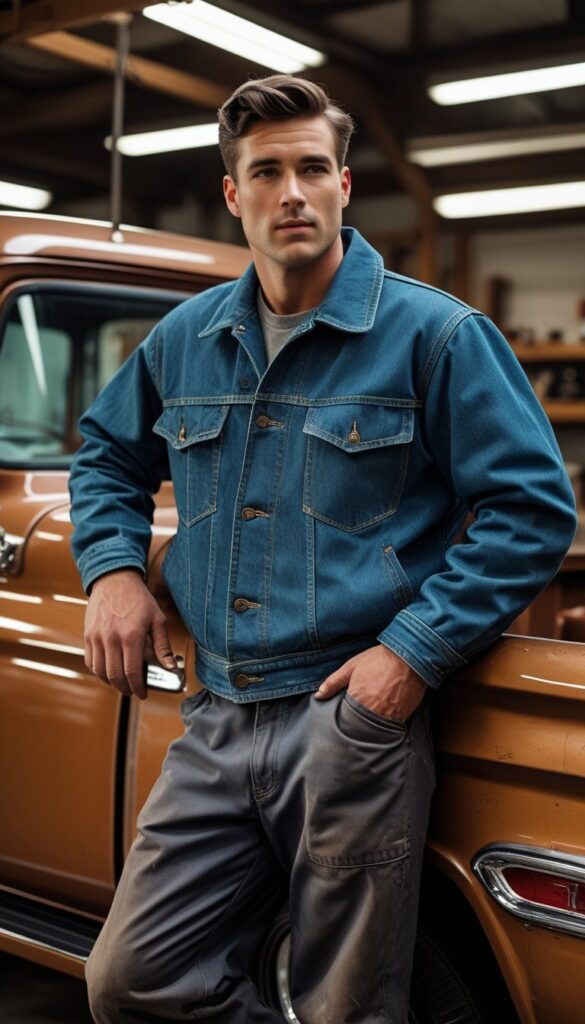
Originally functional, this outfit became a cultural symbol. The rugged denim jacket layered over a white T-shirt, paired with tan or olive work pants, was a uniform for mechanics, laborers, and rebels alike. Scuffed boots and a rolled bandana completed the aesthetic.
Why it works: It represents durability and attitude, blending form and function in a way that’s never gone out of style.
10. Pinstripe Three-Piece Suit with Leather Briefcase
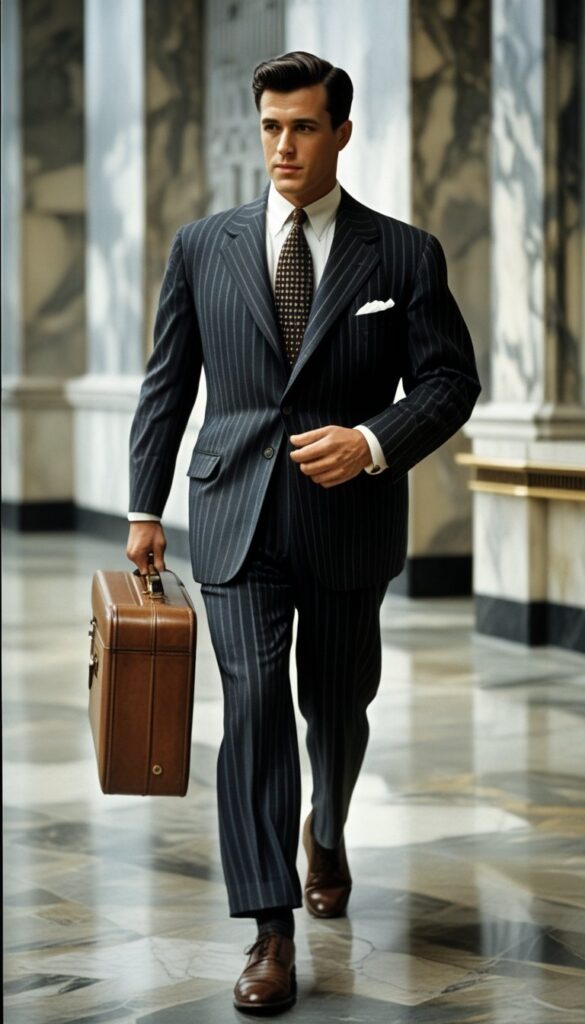
Pinstripes made a bold statement in formalwear. A three-piece suit with matching vest, shirt, and slim tie exuded professionalism and confidence. Often worn with suspenders and a pocket watch, it was a power look for men in finance, law, or leadership.
Why it works: It elongates the body, commands respect, and shows mastery of traditional tailoring.
11. Corduroy Blazer with Patterned Wool Scarf
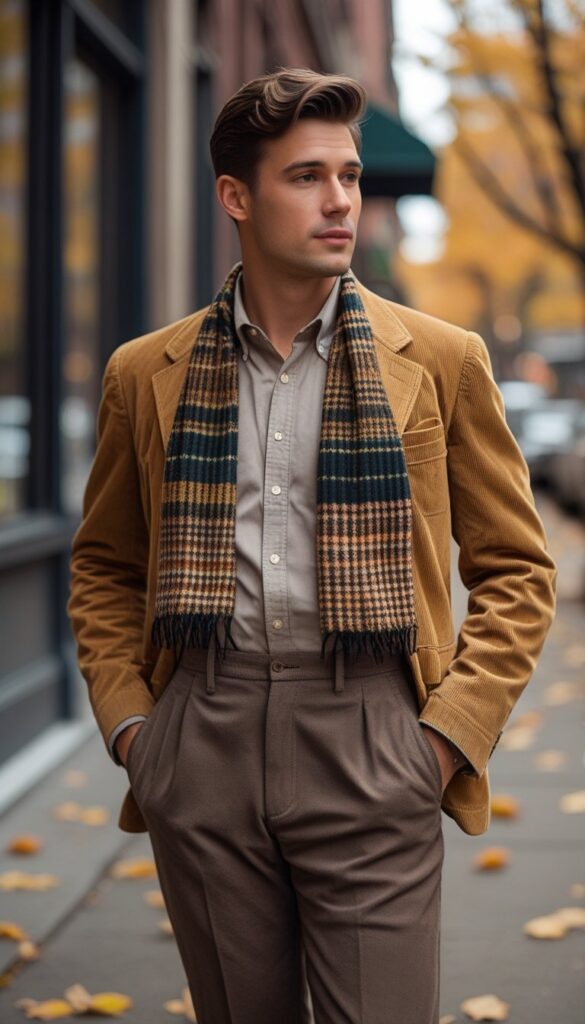
Corduroy was a popular fabric in the 1950s, known for its warmth and textural richness. A corduroy blazer paired with a button-down shirt and slim slacks gave a polished collegiate feel. Men often added patterned wool scarves in muted tones for extra style and warmth.
Why it works: The combination of texture and subtle layering adds dimension, making it timeless yet rooted in mid-century style.
12. Pleated Trousers with Knit Polo Shirt

Pleated trousers offered a tailored look with room for movement — common in both casual and semi-formal wear. Paired with a knit polo shirt, this outfit struck a balance between comfort and structure. A belt and loafers tied it all together.
Why it works: This look blends leisure with refinement, showcasing everyday sophistication from the era.
13. Gabardine Suit with Thin Tie
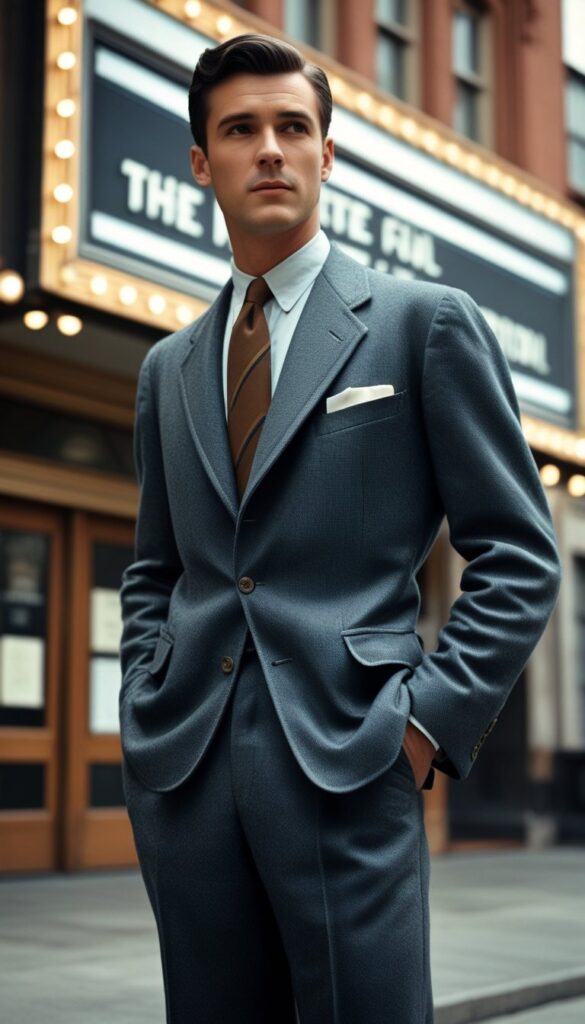
A slim-cut gabardine suit with narrow lapels was the ultimate in post-war elegance. Worn with a crisp white shirt and a thin tie, the silhouette was clean and sharp. Leather oxfords or brogues finished the look.
Why it works: The minimalism and tailoring speak to the decade’s refined masculine ideal.
14. Short-Sleeve Camp Shirt with High-Waisted Shorts
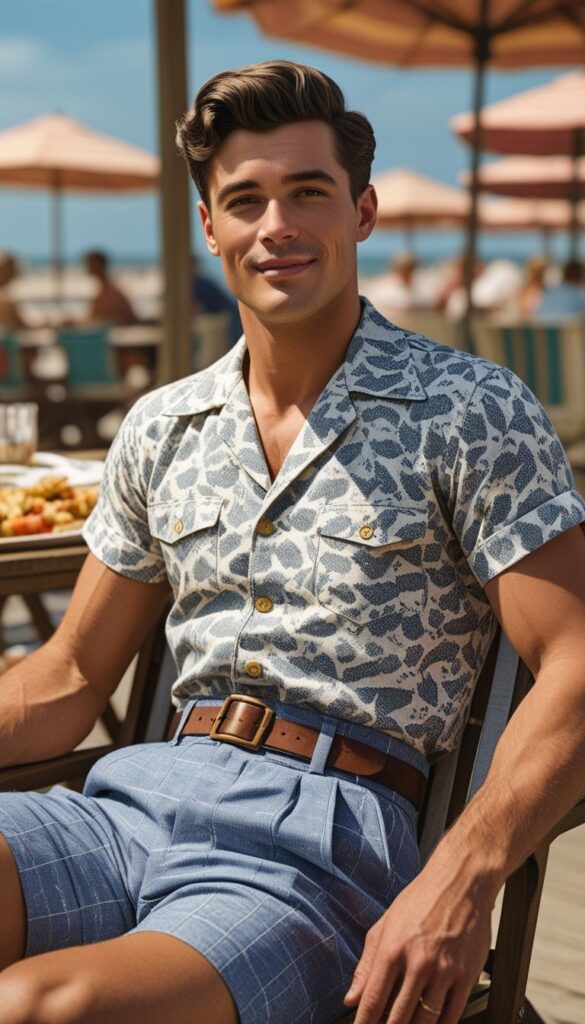
During warmer months, men turned to casual styles like camp collar shirts and high-waisted shorts. Prints like checks, florals, or stripes were common. Worn with sandals or moccasins, this was a summer staple.
Why it works: The loose fit and playful patterns brought ease and personality to weekend dressing.
15. Knit Vest Layered Over a Dress Shirt
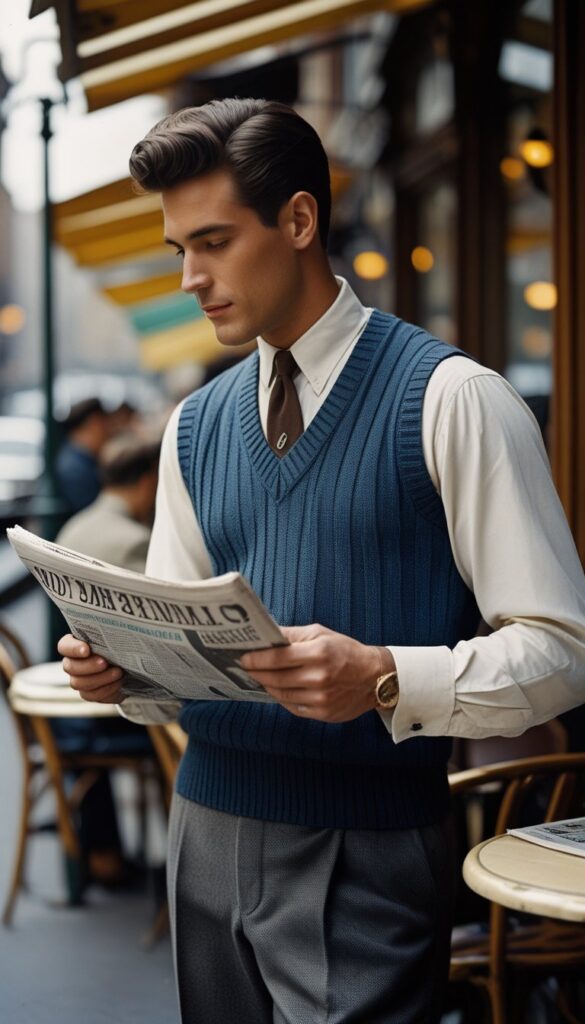
Sweater vests were a preppy essential, often layered over white or light-blue dress shirts. Worn with pressed trousers and dress shoes, it was a popular look among young professionals or college students.
Why it works: The layering creates depth while maintaining a clean silhouette, ideal for transitional seasons.
Also Read:1950s Fashion Women: 18 Iconic Looks That Defined the Decade
16. Bowling Shirt with Straight-Leg Jeans

Bowling shirts, often embroidered or color-blocked, became trendy for leisure wear. When styled with straight-leg jeans and loafers or sneakers, they gave a cool, relaxed finish. Great for hangouts and casual Fridays.
Why it works: It’s bold yet simple — an iconic off-duty look from the era that holds nostalgia and style.


